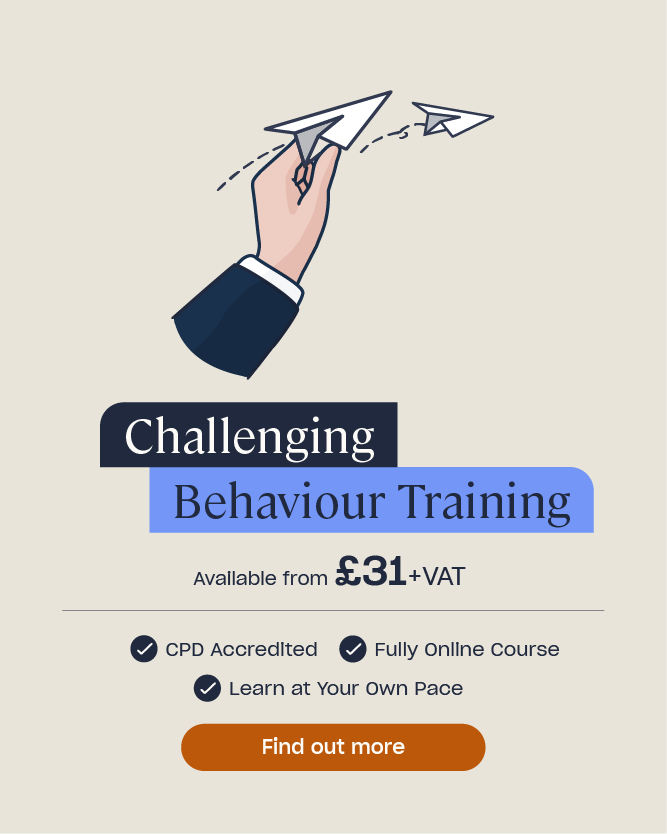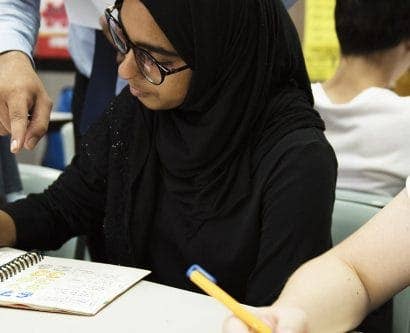How to Create a Behaviour Support Plan: Free Template
If you work with, or care for, children in any context, you will know the impact that behaviour has on how effectively children can learn and thrive. By promoting positive behaviour and setting clear expectations – alongside confidently and sensitively addressing any behaviour that challenges – you can help to ensure that all the children in your care have the best learning experiences.
The term ‘challenging behaviour’ or ‘behaviour that challenges’ can refer to anything from low level disruptive behaviour (such as talking when a teacher is speaking) to extreme behaviour that is dangerous to the individual and those around them (such as physical violence).
In this article we will consider the benefits of behaviour support plans, why and when they might be used, and how to create an effective plan. At the end of the article, there is a downloadable template that you can use to create your own plan.

What Is a Behaviour Support Plan?
All behaviour is communication – an expression of a child or young person’s needs or feelings. In order to address any concerning behaviour, we need to try to unpick what is being communicated. Often by applying general good behaviour management practices most issues can be resolved.
Want to Learn More?
Our Challenging Behaviour training course is recommended for professionals who want to have a better understanding of how to respond to the behaviour of the children and young people that they work with. It emphasises proactive strategies to prevent behaviour incidents, as well as going through research-based reactive strategies (including reacting to extreme behaviour) and putting support in place after behaviour incidents. Visit our course library to have a look at this and our other available training courses.
However, if a pupil regularly displays extreme behaviour, you might consider using a behaviour support plan (also referred to as a BSP). It is a personalised strategy, best suited to individuals whose behaviour has a severe impact on them or others.

The key concept is ‘support’ – a BSP should support the child to take responsibility for their own behaviour and make more appropriate behaviour choices (NSCE). As a result, it should contain strategies to aid the child in doing this. Behaviour support plans are used throughout education, health and social care to benefit individuals with learning, behaviour, or social difficulties.
Why Should Schools Use Behaviour Support Plans?
The benefits of using a school-based behaviour support plan include:
- Eventually reducing the frequency and severity of the behaviour which challenges, as triggers are identified and addressed.
- Providing clear documentation of any incidents.
- Ensuring everyone working with the child consistently uses the same approaches.
- Ensuring that parents are aware of the strategies that are being used in school.
- Potentially aiding in accessing specialist support from outside agencies, if that becomes necessary.

A positive behaviour support plan also offers the child a concrete record of the support that is going to be put in place for them, demonstrating a commitment on behalf of all involved to their wellbeing.
It is good practice to have an accessible version of the plan, or the main parts of it, for the child. This might mean adapting the language or format, depending on the age or needs of the child. Having a record of the strategies that are going to be used can give them a further sense of consistency.
Everyone involved with the child’s care should help to create the plan – ensuring a detailed and well-rounded understanding of the pupil. A child may, for instance, respond differently to triggers in different environments. It is important that the pupils themselves are central to the creation of the plan, and input is included from all staff working with the pupil, the pupil’s parents or carers, and possibly your SENCo or school pastoral support.
How Do I Create an Effective Behaviour Support Plan?
To create an effective behaviour support plan, you can apply the Graduated Approach steps of ‘assess, plan, do, and review’ (the approach recommended by the 2015 Send Code of Practice to best identify and support additional needs).

Assess – Identify Problem Behaviours
At this first stage, you need to observe and record the behaviour. Try to involve both the pupil themselves and their parents or carers. Although some children may not be aware of what triggers them, some may be able to offer insight that can be built upon.
If there are multiple concerning behaviours, identify either the most concerning one, or the one which is most likely to be improved. It is important that you do not try to address too much at once.
When analysing your assessments, try to reflect on what the information tells you. You may be able to identify when the challenging behaviour is likely to occur, and what you could do to avoid it, and also which consequences (positive or negative) seem to motivate the child most.
Try to work out the reasons behind the particular behaviour – remember to speak to your SENCo if you suspect underlying SEND, or to your Designated Safeguarding Lead (DSL) if you think there may be safeguarding concerns.
Once the observations have been made, you can consider what can be done to support improvement.

Plan – Your Intervention Strategy
Your intervention strategy should consider the child’s needs and the different ways you could respond to them.
Think about:
- The antecedents of the behaviour. (ABC charts can be useful for this section of the plan. See our Hub article for detailed guidance regarding ABC charts.)
- How to best support the pupil.
- How to minimise the impact of this behaviour.
You will need to include both proactive and reactive strategies within the plan – these strategies should be personalised to the child.
Proactive Strategies
Proactive strategies are those which seek to prevent the behaviour which challenges from happening in the first place. These might include:
- Removing or minimising identified triggers in advance.
- Making any necessary adjustments to the physical learning environment (for example, adjusting noise levels, limiting sensory overload, or tweaking seating arrangements can all have a positive effect).
- Helping the child communicate their feelings in preferable ways. This does not have to be verbal – it could be through visual aids, feelings scales, or calm-down cards. You might also include targeted inventions.
- Establishing routines – this will provide security and consistency for the child.
- Personalised incentives or rewards – discuss beforehand which rewards and incentives work for the child.
- Ensuring boundaries are understood and respected – be clear and consistent.
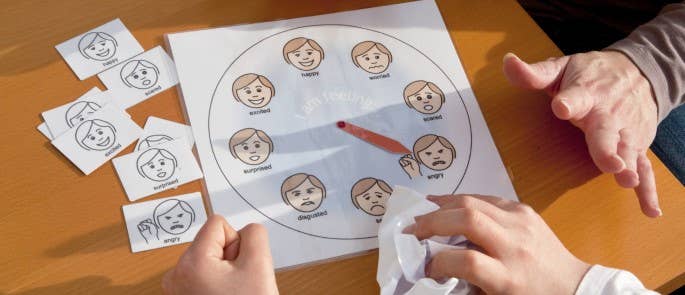
Reactive Strategies
Reactive strategies are ones that are used after the undesired behaviour occurs. By having these stated in the plan, everyone knows in advance how to respond to the behaviour. Such strategies might include:
- Strategic ignoring of the behaviour, if appropriate.
- Reminding the child of what is expected of them.
- Distracting the child.
- Removing the trigger relating to the particular incident.
- Taking action to ensure the immediate safety of the child and those around them.
- Any calm-down strategies to prevent re-escalation of the behaviour.
- Implementing any agreed sanctions, or restorative approaches – these may be informed by your school’s behaviour policy. By having these set out in the plan, the child knows what the consequences will be.
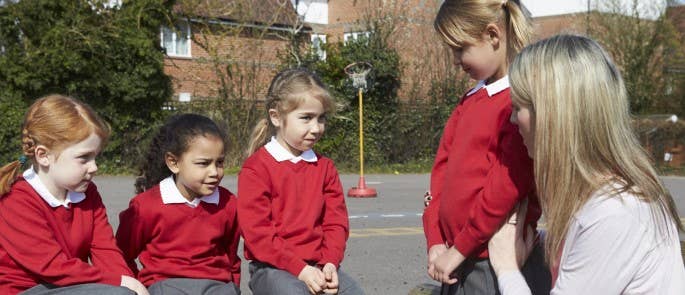
The Challenging Behaviour Foundation states that a good plan should have more proactive than reactive strategies.
Do – Implement Your Strategy
The implementation phase is where you put the strategies in place. During this phase, it’s also important to use general positive behaviour strategies, such as the following:
- Catch them doing the right thing and reward appropriate behaviour.
- Give praise and encouragement, depending on the child’s preference. Children do not always respond the same way to praise – find out what works for them beforehand.
- Keep parents informed when positive behaviour is noted – this could be a quick phone call or email, a note in their contact book or planner, or a postcard home, etc.
- Teach the pupil an alternative acceptable behaviour, where applicable.

Review – Evaluate Your Strategy
You should be continuously monitoring the success of the strategies and noting any observations. Some strategies might work at certain times of the day, but not at others. Other strategies may seem successful for a while but then you notice that their impact declines.
It is good practice to set a date for a more formal review of the plan. Make sure you allocate sufficient time, however, as behaviour support plans will take time to implement successfully.
At the review stage, you should communicate with, and gather the feedback of, all those parties involved with the implementation and the planning process (the pupil, their parents/carers, teachers, support staff, SENCo).

When evaluating the plan, you should consider:
- Rewards and sanctions – are they currently effective, or should you change the type or frequency?
- Relationships – are they positive or not? How might you address any that are not?
- Clarity and consistency – is the plan easy to understand, and is everyone following it at all times?
- Parents – is home/school communication open and honest? Has any impact been seen at home? Are parents happy with the plan, and are they on board and collaborating?
If elements of the strategy are not working you will need to decide whether to persist with them (and for how long before re-evaluating), whether to make any adjustments, or whether to try a different approach. Because factors that trigger and maintain behaviour change over time, you will need to continually review the plan.
Free Behaviour Support Plan Template
Below, we have created an editable PDF template for a behaviour support plan, which you can use for any child in your setting who might benefit from it. The sections correspond to the process described in this article.
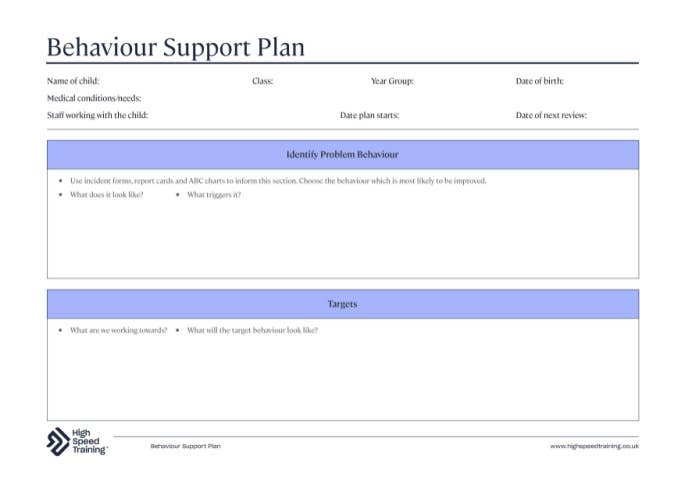
Behaviour support plans are an effective school-based tool that you can use when a child is regularly displaying behaviour that challenges. They work alongside your general good practice with regards to behaviour, whilst detailing a personalised approach. A BSP will allow you to observe behaviour carefully, investigate the reasons behind it, and put in place specific support strategies for an individual child. As with all provision, it is important that the effectiveness is continually reviewed and your approach adjusted where necessary. We hope that this article and the accompanying template is useful for your practice.
Further Resources:
- Challenging Behaviour Training
- Creating a School Behaviour Management Policy
- ABC Chart for Challenging Behaviour: Free Template
- How to Deal with Challenging Behaviour in the Classroom
- How to Set Behaviour Expectations in the Classroom
- Conflict in the Classroom: Coaching Children in Acting Responsibly
- Effective Interventions in Education: Types and Examples



